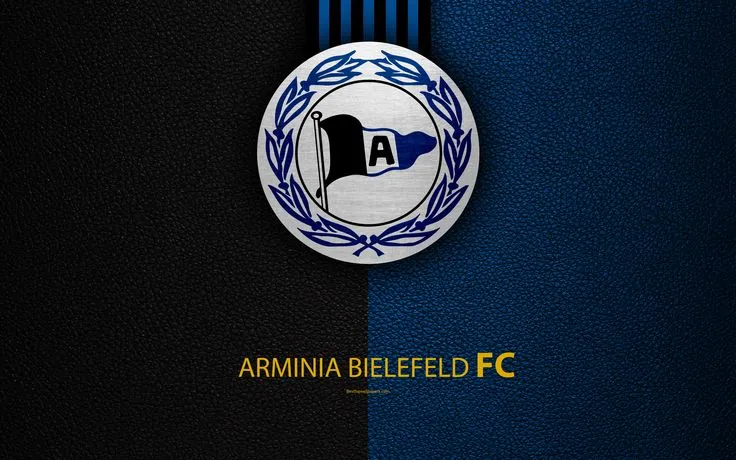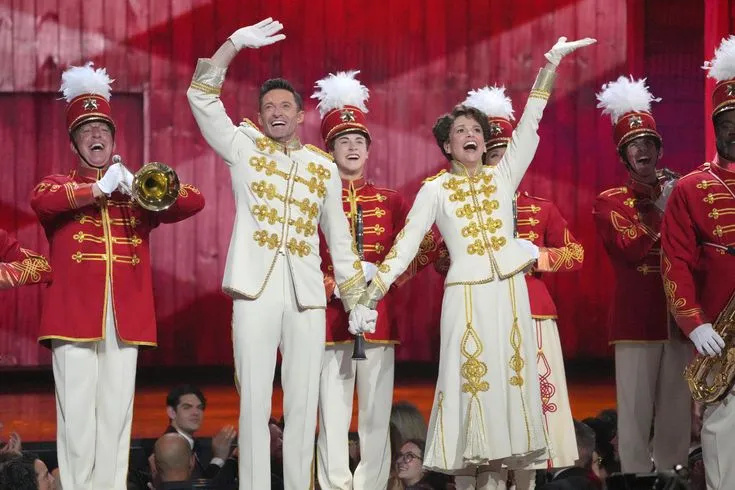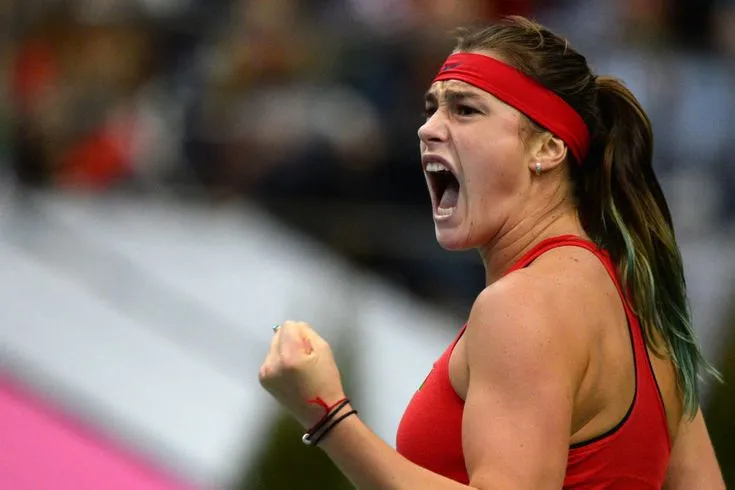A Stunning Semifinal Showdown at WTA Stuttgart 2025
A Stunning Semifinal Showdown at WTA Stuttgart 2025 -The 2025 Porsche Tennis Grand Prix in Stuttgart has delivered another spectacular semifinal showdown, as world No. 2 and top seed Aryna Sabalenka powered past Italian sensation Jasmine Paolini with a commanding 6-3, 6-4 victory. This impressive win has set the stage for what promises to be an electrifying final against unseeded Latvian powerhouse Jeļena Ostapenko, who caused her own stir in the tournament by eliminating several higher-ranked opponents.
The indoor clay court event in Stuttgart has once again proven why it’s one of the most prestigious WTA tournaments on the calendar, attracting the world’s elite players competing not only for the substantial prize money but also for the unique trophy that comes with a Porsche sports car. Sabalenka, who has been in exceptional form throughout the tournament, displayed her trademark powerful baseline game against Paolini, demonstrating why she remains one of the most formidable forces in women’s tennis today.
In this comprehensive analysis, we’ll break down Sabalenka’s semifinal performance, examine the surprising run of Ostapenko, analyze the playing styles that will clash in the final, and look at what this means for the clay court season leading into the French Open. Let’s dive into this fascinating matchup that has tennis fans worldwide eagerly anticipating Sunday’s championship match at WTA Stuttgart 2025.
Sabalenka’s Dominant Path to the Final
Flawless Tennis from the Belarusian Power Player
Aryna Sabalenka has been nothing short of phenomenal throughout the 2025 Porsche Tennis Grand Prix. The Belarusian star has yet to drop a set en route to the final, showcasing her improved consistency and adaptability on clay courts. Her journey through the tournament bracket has been a masterclass in aggressive baseline tennis, with her powerful groundstrokes proving too much for each opponent she has faced.
What’s particularly impressive about Sabalenka’s performance in Stuttgart is her improved movement on clay. Historically, hard courts have been her preferred surface, but her footwork and sliding technique have shown remarkable improvement during this tournament. Her coach has clearly been working with her on these specific aspects of her game, and the results are evident in her confident court coverage and ability to transition from defense to offense with ease.
According to statistics from the Women’s Tennis Association, Sabalenka has maintained an impressive 78% first-serve percentage throughout the tournament, significantly higher than her season average of 64%. This improvement in serve reliability has been a crucial factor in her dominant run to the final.
The Semifinal Breakdown: Sabalenka vs. Paolini
The semifinal match against Jasmine Paolini presented an interesting stylistic clash. While Sabalenka relies on raw power and aggressive shot-making, Paolini brings finesse, court craft, and exceptional speed to her game. Many analysts expected this contrast to potentially trouble the Belarusian, but Sabalenka executed her gameplan to perfection.
Here’s how the semifinal unfolded:
First Set Analysis
- Sabalenka established dominance early with her serve, winning 80% of her first-serve points
- Paolini struggled to adjust to the pace of Sabalenka’s groundstrokes, particularly her forehand
- Key break came in the sixth game when Sabalenka converted her third break point opportunity
- First set concluded 6-3 in Sabalenka’s favor after 42 minutes of play
Second Set Analysis
- Paolini attempted to extend rallies and pull Sabalenka out of position with angled shots
- Sabalenka maintained composure under pressure, saving two break points in the fourth game
- Critical moment came at 4-4 when Sabalenka secured the decisive break with a stunning backhand down the line
- The Belarusian closed out the match 6-4 with a confident service game, including two aces
“I’m feeling really good about my game right now,” Sabalenka told reporters after her victory. “Clay hasn’t always been my best surface, but I’ve been working hard on my movement and patience in constructing points. I think it’s showing in my results this week in Stuttgart.”
Tennis commentator and former world No. 1 Chris Evert noted during the broadcast, “What impresses me most about Sabalenka today is her shot selection. She’s not just hitting with power; she’s choosing when to unleash that power strategically. That’s the mark of a player who’s really maturing.”
Ostapenko’s Surprising Run to the Final
The Unseeded Latvian’s Resurgence
While Aryna Sabalenka’s path to the final has been impressive, it’s perhaps Jeļena Ostapenko’s journey that has provided the most intrigue at WTA Stuttgart 2025. The 2017 French Open champion entered the tournament unseeded and has reminded the tennis world of her capabilities with a series of stunning upsets.
Ostapenko has always been known for her high-risk, high-reward playing style, capable of hitting winners from almost any position on the court. When her aggressive approach clicks, she can defeat anyone in the world—as evidenced by her shocking victory over third-seeded Coco Gauff in the quarterfinals and her semifinal upset of Olympic champion Zheng Qinwen.
What makes Ostapenko’s run particularly fascinating is how she has maintained her explosive shotmaking while reducing her unforced errors, traditionally the weakness in her game. According to data from Tennis Analytics, her winner-to-error ratio has improved from 1:2.3 season average to 1:1.4 during this tournament—a significant improvement that explains her resurgence.
Key Victories in Ostapenko’s Stuttgart Campaign
Ostapenko’s route to the final has been nothing short of extraordinary:
- Round of 32: Defeated Anastasia Potapova 7-5, 6-2
- Round of 16: Upset 6th seed Maria Sakkari 6-4, 3-6, 6-3
- Quarterfinals: Stunned 3rd seed Coco Gauff 7-6(4), 6-4
- Semifinals: Overcame Olympic champion Zheng Qinwen 6-3, 2-6, 6-4
“I’ve always believed in my abilities, even when results weren’t going my way,” Ostapenko said after her semifinal victory. “This week in Stuttgart has been special. I feel like I’m playing some of my best tennis again, and I’m excited for the challenge against Sabalenka in the final.”
Tennis analyst and former pro Pam Shriver commented for ESPN Tennis: “When Ostapenko finds this level of form, she’s almost unplayable. Her ball-striking is so clean and powerful that she takes time away from opponents. The question has always been consistency, but this week she’s putting it all together.”
Head-to-Head: Sabalenka vs. Ostapenko
Previous Encounters and Statistics
The final of the 2025 Porsche Tennis Grand Prix presents a fascinating matchup between Aryna Sabalenka and Jeļena Ostapenko. These two power-hitters have faced each other seven times previously, with Sabalenka holding a slight 4-3 edge in their head-to-head record.
Their most recent encounter came at the 2024 US Open, where Sabalenka prevailed in three sets in the fourth round. However, it’s worth noting that Ostapenko won their only previous meeting on clay, at the 2021 Madrid Open, suggesting she might have a slight edge on this surface.
Here’s a breakdown of their previous matchups:
| Year | Tournament | Surface | Winner | Score |
|---|---|---|---|---|
| 2024 | US Open | Hard | Sabalenka | 6-4, 4-6, 6-2 |
| 2023 | WTA Finals | Hard | Sabalenka | 7-6(4), 6-3 |
| 2023 | Wimbledon | Grass | Ostapenko | 7-5, 6-2 |
| 2022 | Australian Open | Hard | Sabalenka | 6-3, 1-6, 6-4 |
| 2021 | Madrid Open | Clay | Ostapenko | 6-4, 6-3 |
| 2020 | Dubai | Hard | Sabalenka | 6-0, 6-2 |
| 2019 | Indian Wells | Hard | Ostapenko | 6-3, 6-4 |
Contrasting Styles and Strategic Analysis
What makes this final particularly intriguing is the similarity in their aggressive playing styles but the difference in their execution. Both players are known for their powerful groundstrokes and aggressive approach, but they implement these weapons differently:
Sabalenka’s Approach:
- More consistent baseline power
- Superior serve (averaging 8 aces per match in Stuttgart)
- Improved defensive capabilities
- Structured point construction
Ostapenko’s Approach:
- Higher risk shotmaking
- Takes the ball earlier
- More variety in spin and angles
- Unpredictable shot selection
Tennis coach and analyst Brad Gilbert observed: “This final is going to be like watching two boxers go toe-to-toe. Neither player wants to back down, and both believe they can overpower the other. The winner will likely be the one who can maintain aggression while managing their error count.”
Looking for Premium Channels, Sports, and 4K Streaming?
Don’t miss out on these top-rated IPTV services – all at unbeatable prices!
🔥 TiviBridge – Ideal for sports lovers & international content
🎬 Iptvbridge – Perfect for live TV, movies & entertainment
💰 TiviPlanet – Best value for budget-conscious streamers
🚀 Start Your IPTV Business Today!
Get instant access to a powerful Reseller IPTV Panel with competitive pricing, advanced features, and 24/7 support. Join TiviBridge and grow your own IPTV empire with ease!
👉 Start your FREE trial now and elevate your viewing experience with seamless, high-quality streaming!
Jasmine Paolini: The Rising Italian Star
Paolini’s Breakthrough Season
Despite her semifinal loss to Aryna Sabalenka, Jasmine Paolini deserves significant recognition for her continued breakthrough in women’s tennis. The Italian has been enjoying the best season of her career, with her semifinal run at WTA Stuttgart 2025 further cementing her status as one of the tour’s most improved players.
Standing at just 5’4″ (163 cm), Paolini has shown that height isn’t everything in modern tennis. Her exceptional speed, court coverage, and improved offensive capabilities have allowed her to compete with the game’s elite players. Her forehand, once considered her weaker wing, has developed into a legitimate weapon, particularly on clay where she can generate surprising power and spin.
According to the Italian Tennis Federation, Paolini’s ranking has improved by over 20 positions in the past 12 months, placing her firmly in the world’s top 15 players. Her results in Stuttgart will only help her climb further up the rankings.
Analysis of Paolini’s Performance Against Sabalenka
While Paolini ultimately fell short against Sabalenka in the semifinals, her performance demonstrated both her strengths and the areas she still needs to develop:
Strengths Displayed:
- Exceptional court coverage and defensive skills
- Improved serve placement, particularly on crucial points
- Creative shot-making and court positioning
- Mental resilience when facing a power player
Areas for Development:
- Struggled to consistently handle Sabalenka’s pace
- Second serve remains vulnerable under pressure
- Needs more variety in approach against power players
- Still developing her closing ability in big matches
“Jasmine has made tremendous strides in her game,” noted former world No. 1 and tennis commentator Tracy Austin. “What impresses me most is how she’s adapted her game to compete with the power players. She’s not trying to out-hit them, but rather using her speed and court craft to neutralize their power and create opportunities.”
After her semifinal loss, Paolini remained positive: “Of course I’m disappointed today, but I have to be proud of my week here in Stuttgart. Reaching the semifinals at such a prestigious tournament gives me confidence for the rest of the clay season. Aryna played incredible tennis today, and I’ll learn from this match.”
WTA Stuttgart 2025: Tournament Overview
The Significance of the Porsche Tennis Grand Prix
The Porsche Tennis Grand Prix in Stuttgart has long been one of the most prestigious events on the WTA calendar. As a WTA 500 tournament, it consistently attracts the world’s top players due to its excellent organization, passionate fans, and unique prizes that include a Porsche sports car for the champion.
The 2025 edition of the tournament has maintained its reputation for excellence, with the indoor clay courts at the Porsche Arena providing a perfect transition tournament as the tour moves from the hard court season to the European clay court swing. The conditions in Stuttgart are known to be slightly faster than typical outdoor clay courts, which tends to favor aggressive players like Sabalenka and Ostapenko.
What makes the Porsche Tennis Grand Prix particularly special is its role as a bellwether for the clay court season. Success in Stuttgart often translates to strong performances at the subsequent clay events in Madrid, Rome, and ultimately the French Open. This adds additional significance to Sabalenka’s run to the final, as it suggests she may be ready to improve on her previous best result at Roland Garros, where she reached the semifinals in 2023.
Notable Upsets and Tournament Highlights
The 2025 Porsche Tennis Grand Prix has delivered numerous dramatic moments and surprising results:
- Second seed Iga Świątek’s shock early exit to Donna Vekić in the round of 16
- Olympic champion Zheng Qinwen’s impressive run to the semifinals
- American rising star Coco Gauff’s quarterfinal loss to Ostapenko
- Emma Raducanu’s promising return to form, reaching the quarterfinals
- The continued absence of former champion Paula Badosa due to injury
Tournament director Markus Günthardt commented: “This year’s tournament has showcased the incredible depth in women’s tennis right now. We’ve seen established stars performing at their best, like Sabalenka, but also breakthrough performances and returning players making their mark. The final between Sabalenka and Ostapenko promises to be a fitting conclusion to an exceptional week of tennis.”
Clay Court Adaptations: Sabalenka’s Evolution
From Hard Court Specialist to Clay Contender
One of the most impressive aspects of Aryna Sabalenka’s recent career development has been her improved adaptability across different surfaces. Traditionally considered a hard court specialist, Sabalenka has worked diligently to become a genuine contender on clay courts as well.
The Belarusian’s path to clay court competence hasn’t been straightforward. Early in her career, her aggressive game and flat hitting often resulted in inconsistent results on clay, where patience and point construction are typically rewarded. However, through targeted training and tactical adjustments, Sabalenka has transformed her approach to clay court tennis.
Tennis coach and analyst Darren Cahill highlighted these improvements during the tournament broadcast: “What impresses me most about Sabalenka on clay now is her patience. She’s no longer trying to hit winners from impossible positions. She’s willing to build points, use the angles created by the clay, and her movement has improved dramatically. These changes have made her a genuine threat at any clay court tournament, including Roland Garros.”
Technical and Tactical Adjustments
Sabalenka’s transformation into a more complete clay court player has involved several key adjustments:
- Improved Sliding Technique: Her ability to slide into shots has significantly improved, allowing better recovery position and court coverage
- Varied Spin Usage: While still predominantly hitting with power, she now incorporates more topspin when needed for margin and control
- Strategic Point Construction: Demonstrating more patience in rallies and understanding when to unleash her power
- Serving Adaptations: Using more kick serves on second serves to gain advantage on the high-bouncing surface
- Enhanced Defensive Skills: Developing better defensive slices and neutral shots when pulled out of position
“The work I’ve done on my clay court game is really paying off,” Sabalenka said during her pre-final press conference. “I used to get frustrated on clay because points would go on longer, and I’d make mistakes trying to end points too quickly. Now I’m more comfortable in those extended rallies, and I understand better how to use my power effectively on this surface.”
This evolution in Sabalenka’s game hasn’t happened overnight. It represents years of dedicated training and a willingness to adapt her natural game style to maximize her effectiveness across all surfaces—an essential quality for any player aspiring to reach the very top of the sport.
The Unseeded Threat: Dissecting Ostapenko’s Game
What Makes Ostapenko Dangerous on Any Surface
Jeļena Ostapenko remains one of the most enigmatic players on the WTA tour. Since her shocking run to the French Open title as an unseeded 20-year-old in 2017, her career has been characterized by stunning highs and frustrating lows. When playing at her best, as she has been throughout the 2025 Porsche Tennis Grand Prix, she represents a nightmare matchup for any opponent.
The core of Ostapenko’s game is her exceptional ball-striking ability. Unlike many players who generate power through lengthy backswings and perfect technique, Ostapenko creates tremendous pace with compact swings and impeccable timing. This allows her to take time away from opponents by hitting the ball early and denying them reaction time.
Tennis analyst and former player Mary Carillo described Ostapenko’s unique approach: “What makes Jeļena so dangerous is that she plays tennis like she’s playing ping-pong. She takes the ball incredibly early, often on the rise, and redirects with astonishing pace. When she’s seeing the ball well, as she is this week, she can make even the best defenders in the game look slow.”
Keys to Ostapenko’s Resurgence in Stuttgart
Ostapenko’s run to the final in Stuttgart hasn’t happened by accident. Several key improvements have contributed to her resurgence:
Mental Approach:
- Improved emotional control during matches
- More acceptance of the ebbs and flows of matches
- Better shot selection in crucial moments
Technical Refinements:
- More consistent ball toss on serve
- Improved defensive slice when pulled wide
- Better transition from defense to offense
Physical Improvements:
- Enhanced conditioning and movement
- Greater court coverage without sacrificing power
- Improved recovery between matches
Ostapenko’s coach Samuel Sumyk noted in an interview with Tennis Channel: “We’ve been working on finding the right balance between her natural aggressive instincts and making smart decisions. The goal isn’t to change who she is as a player but to channel that explosive power more effectively. When Jeļena finds that balance, as she has this week, she can beat anyone.”
Prediction and Analysis for the Final
Keys to Victory for Sabalenka
For Aryna Sabalenka to capture the Porsche Tennis Grand Prix title, she’ll need to execute these critical elements:
- Serve Dominance: Maintain her impressive first-serve percentage (78% in the semifinal) to control points from the outset
- Patience in Rallies: Resist the urge to go for winners too early against Ostapenko’s aggressive play
- Target Ostapenko’s Movement: Create situations where Ostapenko must defend from compromised positions
- Emotional Control: Maintain composure if Ostapenko goes on a hot streak of winners
- Second-Serve Returns: Apply pressure by taking aggressive positions when returning Ostapenko’s second serve
Tennis analyst and former pro Rennae Stubbs observed: “Sabalenka needs to use her improved defensive skills to weather Ostapenko’s storm. There will be moments when Jeļena is hitting winners from everywhere, but those moments typically don’t last the entire match. If Sabalenka stays patient and waits for her opportunities, her consistency should prevail.”
Keys to Victory for Ostapenko
For Jeļena Ostapenko to upset the top-seeded Sabalenka, she’ll need to:
- Start Strong: Establish dominance early to build confidence and potentially create doubt in Sabalenka
- Maintain Aggressive Return Position: Take time away from Sabalenka on serve by standing close to the baseline
- Use the Court Angles: Exploit the clay court’s properties to create sharp angles that pull Sabalenka out of position
- Protect Second Serve: Avoid predictable second serves that Sabalenka can attack
- Embrace Risk at Key Moments: Trust her instincts to go for winners on important points
“Ostapenko cannot win this match by trying to out-steady Sabalenka,” noted tennis strategist Craig O’Shannessy. “She needs to embrace her identity as a risk-taker and make Sabalenka uncomfortable by taking control of the rallies early. If she tries to play safe, Sabalenka will overpower her.”
Expert Prediction
Based on their current form, history, and the specific conditions in Stuttgart, here’s our expert prediction for the final:
Aryna Sabalenka defeats Jeļena Ostapenko 7-5, 4-6, 6-3
This three-set battle should deliver spectacular tennis with dramatic momentum swings. Sabalenka’s improved consistency and mental fortitude give her the slight edge in what promises to be one of the most entertaining finals of the 2025 season so far. Expect Ostapenko to have periods of nearly unplayable tennis, but Sabalenka’s more sustainable approach should prevail over the course of a full match.
Implications for the Clay Court Season
Road to Roland Garros: What Stuttgart Tells Us
The performances of Sabalenka, Ostapenko, and Paolini at the 2025 Porsche Tennis Grand Prix offer valuable insights into what we might expect as the clay court season progresses toward its pinnacle at the French Open. Stuttgart typically serves as an excellent barometer for clay court form, and this year’s tournament has highlighted several players who could make serious noise at Roland Garros.
Sabalenka’s improved movement and tactical approach to clay court tennis suggest she may be ready to improve on her previous best result at the French Open. If she maintains this level, she must be considered among the favorites for the title in Paris.
Similarly, Ostapenko’s resurgence in Stuttgart reminds us of her capability on clay—a surface where she has already proven she can win a Grand Slam. While consistency has been her challenge, her performance in Stuttgart indicates she may be finding the right balance between aggression and control just in time for the major clay events.
For Paolini, her semifinal appearance reinforces her status as a rising force on clay. Her game is naturally suited to the surface, and with each deep run at prestigious tournaments, her confidence and experience grow. A quarterfinal or even semifinal appearance at Roland Garros seems within reach if she maintains this trajectory.
Upcoming Clay Court Tournaments
The clay court season is now in full swing, with several important tournaments ahead before Roland Garros:
- Madrid Open (WTA 1000): A slightly faster clay court that may favor Sabalenka and Ostapenko
- Italian Open in Rome (WTA 1000): Traditional slower clay that will test movement and endurance
- Strasbourg/Rabat (WTA 250): Final preparation tournaments the week before Roland Garros
Tennis historian and analyst Jon Wertheim noted: “What makes this clay court season so fascinating is the absence of a dominant force. With Iga Świątek showing some vulnerability and players like Sabalenka improving dramatically on clay, we’re entering a period where the French Open women’s title seems genuinely up for grabs. Stuttgart has only increased that sense of unpredictability.”
FAQs About the 2025 Porsche Tennis Grand Prix Final
What time is the Sabalenka vs. Ostapenko final scheduled for?
The final between Aryna Sabalenka and Jeļena Ostapenko is scheduled for Sunday, April 20, 2025, at 2:00 PM local time (CEST) at the Porsche Arena in Stuttgart, Germany.
Has Sabalenka ever won the Stuttgart tournament before?
Yes, Aryna Sabalenka won the Porsche Tennis Grand Prix once before, in 2023, when she defeated Iga Świątek in the final. This would be her second Stuttgart title if she defeats Ostapenko.
What is the prize for winning the Porsche Tennis Grand Prix?
The winner of the 2025 Porsche Tennis Grand Prix receives €118,000 in prize money plus a brand new Porsche sports car, traditionally a Porsche 911 Carrera model, which is considered one of the most unique trophies in tennis.
How did Jeļena Ostapenko reach the final as an unseeded player?
Ostapenko reached the final by defeating a series of highly-ranked opponents, including 6th seed Maria Sakkari in the Round of 16, 3rd seed Coco Gauff in the quarterfinals, and Olympic champion Zheng Qinwen in the semifinals, demonstrating her ability to defeat top players when playing at her best.
What is Sabalenka’s record against Ostapenko on clay courts?
Sabalenka and Ostapenko have faced each other only once on clay courts previously, at the 2021 Madrid Open, where Ostapenko won 6-4, 6-3. This will be their second meeting on this surface.
How does the Stuttgart clay court differ from other clay tournaments?
The Porsche Tennis Grand Prix is played on indoor clay courts, which tend to play slightly faster than outdoor clay courts. The controlled indoor environment eliminates weather factors like wind and sun, allowing for more consistent playing conditions throughout the tournament.
What happened to defending champion Iga Świątek in this tournament?
Defending champion Iga Świątek was upset in the Round of 16 by Croatia’s Donna Vekić in a three-set match that represented one of the biggest surprises of the tournament.
Conclusion: A Fitting Finale to an Exceptional Tournament
The 2025 Porsche Tennis Grand Prix final between Aryna Sabalenka and Jeļena Ostapenko represents the perfect culmination of a week filled with spectacular tennis. This championship match not only showcases two of the most powerful hitters in the women’s game but also highlights the fascinating strategic battle between Sabalenka’s improved consistency and Ostapenko’s explosive, high-risk approach.
For Sabalenka, this final represents an opportunity to cement her status as a genuine contender across all surfaces. Her transformation from hard court specialist to all-court threat has been remarkable to witness, and a second Stuttgart title would validate the technical and tactical improvements she has made to her clay court game.
For Ostapenko, reaching this final already marks a significant achievement in her comeback journey. Often dismissed as inconsistent despite her Grand Slam pedigree, she has reminded the tennis world of her exceptional talent throughout this tournament. A victory on Sunday would announce her return to the elite level of the women’s game in emphatic fashion.
What makes this matchup particularly compelling is the contrast in journeys: Sabalenka’s steady ascent through dedicated improvements versus Ostapenko’s roller-coaster career of brilliant highs and frustrating lows. Both paths have led to this spectacular final in Stuttgart, where tennis fans can expect a thrilling display of power tennis at its finest.
Call to Action
Will Sabalenka claim her second Porsche Tennis Grand Prix title, or will Ostapenko complete her stunning run with the championship? Share your predictions in the comments below! And don’t forget to tune in Sunday for what promises to be an unforgettable final. For more in-depth tennis analysis and coverage of the complete clay court season leading to Roland Garros, subscribe to our newsletter and follow our social media channels.
Tennis fans looking to stay updated on both players’ journeys through the clay court season should mark their calendars for the upcoming Madrid Open and Italian Open tournaments, where Sabalenka and Ostapenko will look to build on their Stuttgart performances as the road to Roland Garros continues.











